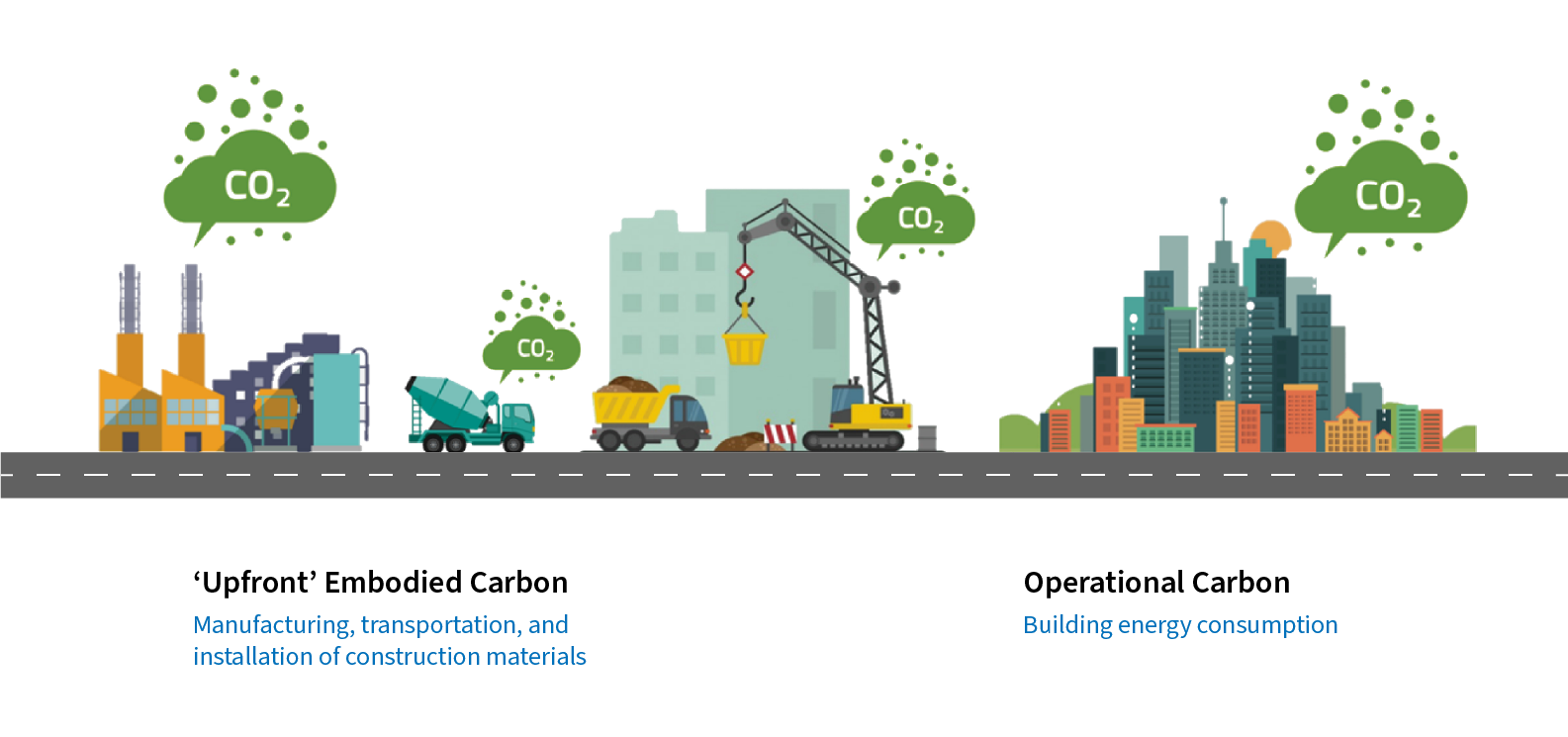Philip Chen FAIA, LEED AP

Principal and President, Ann Beha Architects
In celebration of Asian American and Pacific Islander Heritage (AAPI) Month, the BSA is featuring Profiles on Asian Americans in the profession.
Degree:
Master of Architecture, Harvard Graduate School of Design
Bachelor of Environmental Design, Texas A&M University
Professional Interests:
I’ve served on the Northeastern University School of Architecture Advisory Board, and I’m currently a member of the Society of College and University Planning and a Director on the Board of the Boston Preservation Alliance
How has your heritage shaped who you are today?
My parents came to the United States and met each other in a close community of other Chinese immigrants. Surrounded by that community, I was raised with Chinese culture and conscience, but the national history and heroes I learned about were Euro-American. Today, I have aspects of both Eastern and Western cultures and traditions in me, without fully belonging to either. Like other first-generation Americans, who I am today has been shaped by the challenging and simultaneously liberating experience of being assigned certain cultural expectations while being able to choose between others.
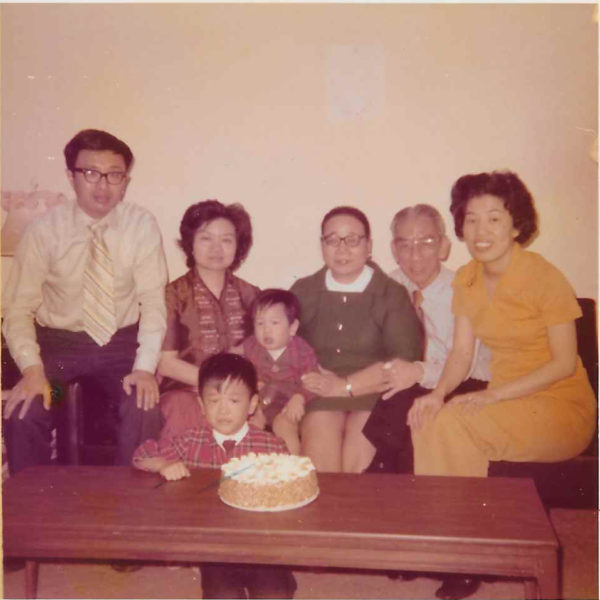
Celebrating Philip’s mother’s birthday with extended family (Philip is sitting between his aunt and his Ah-ma, maternal grandmother)
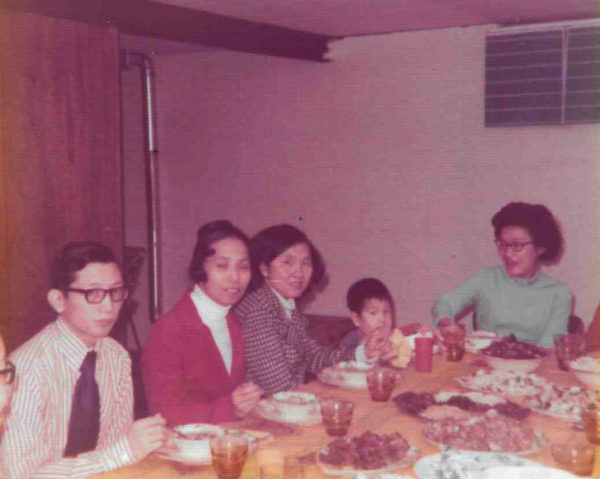
Celebrating Thanksgiving with family and friends
Images courtesy of author
What is a meaningful way that your culture shapes your work?
I grew up learning to let others go first and to not stand out. As a young architect working on a project and coming out of a client meeting, my boss said I should be more vocal and speak up. And when I shared this with my wife, she asked “Did you tell her you were Chinese?” Something I’ve learned in the years since is how to speak boldly about the work and ideas, but balance it with a posture of listening and learning from the people and circumstances around me. Reconciling cultural and professional norms can be tricky for people from different backgrounds, but acknowledging and embracing cultural differences is a way to support and increase diversity in our industry.
While growing up, did you have any AAPI role models in the industry or in popular culture?
Growing up in Dallas, I knew I. M. Pei as the world-famous architect who designed City Hall. In 1989, the same year Pei’s pyramid opened at the Louvre, his Meyerson Symphony Center opened in Dallas. I can’t say I modeled Pei’s career, his person, or his designs, but just knowing that a Chinese-American architect could have such a tremendous impact on public and cultural life made architecture a possible career for me. A friend of my parents also told me that I. M. Pei was perfectly named for an architect (as in “pay”).
How can non-Asians be better allies to advance the profession or create a more just and inclusive society?
I wouldn’t have made it through my training or in this profession without having been given the chance to succeed at new things and second chances after failing. There are so many more non-Asians and non-minorities in positions to give aspiring architects chances, and they can be allies to people who might not fit the stereotypical mold. They can help by hiring and mentoring minorities, committing to their professional development and advancement, and investing in them as leaders. My hope is that the profession will keep growing to reflect more closely the greater public and world we serve.

When did you first become interested in architecture as a possible career?
I became interested in architecture during high school, and I first worked in firm my senior year in the afternoons and after school. I loved drawing and making from a young age, and I liked how architecture seemed to use both sides of my brain. Little did I know how intensely my entire brain would be needed, and for long hours!
If you could give the you of 10 years ago advice, what would it be?
As a new Principal 10 years ago, I didn’t realize how many new skills I’d need to master—communication, empathy, finance, HR, etc.—all in addition to the skills I thought I’d been perfecting to that point. I’d warn myself that the things I knew and had been doing to bring me to that point were enough, but I still had a lot to learn. Some things about myself would have to improve or change altogether, and my capacity to acquire new skills would have to grow immensely if I were to keep going further.
What do you hope to contribute from your work?
Architects imagine new possibilities and create them. My hope is to contribute to the profession, to people’s lives, and to the environment by building the firm to last and by fostering a culture where young and older professionals can learn, grow, and find their best selves. When I’m done, I hope to leave a firm that has a focus on excellent design and integrity embedded deep in its DNA, where people can exercise their life passions and create possibilities together.
What does equity mean to you?
To me, we will find equity when every individual’s unique identity is seen, known, and valued. And instead of barriers being raised because of person’s identity, pathways are opened by their ideas, their work, and their potential.
What are some ways your colleagues could help you feel more empowered at work and as an architect/designer?
When we all seek to learn about, respect, and honor different cultures, their arts and letters and architecture, there is room for everyone to contribute to history and significance. When significance is found only in a specific culture, its symbols and artifacts, then there is more pressure to assimilate and neutralize difference.
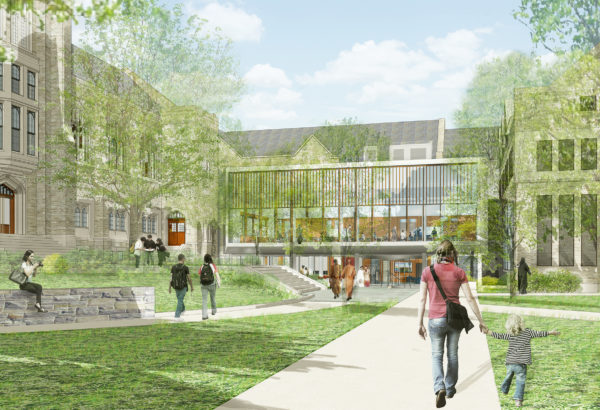
ABA’s addition to Swartz Hall at the Harvard Divinity School is combined with a complete renewal and modernization of the 1911 collegiate gothic building.
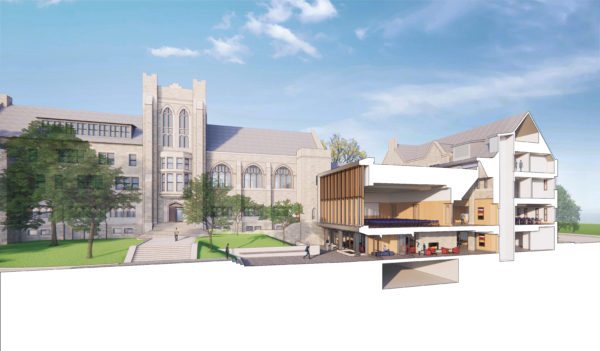
The addition includes a café on the ground level, a new mechanical plant below, and a large event and classroom space on the upper level.
Renderings by Ann Beha Architects
What is the most effective step you’ve taken in your work toward a more sustainable built environment?
When buildings generate nearly 40% of annual global greenhouse gas emissions—and especially in regions like the northeast where most of the built environment already exists—our practice of revitalizing, rehabilitating, and adapting existing and heritage buildings using sustainable and resilient design has a great relevance for owners of existing buildings and historic campuses who are committed to sustainability and being stewards of the environment.
Whom do you most enjoy partnering with on a project?
We are fortunate to be able to work with so many great partners on our projects, some firms that I’ve worked with for decades as well as new and emerging ones. The partner that is unique to every one of our projects is the client, and the most rewarding projects for me are the ones when the outcome—whether it be a building, an addition, or a master plan—are so completely in concert with the client’s mission, goals, and aspirations that it ends up being more impactful and empowering than they ever imagined.

What architectural buzzword would you kill?
Facadectomy—preserving the façade of a building while constructing an entirely new structure and interior behind it. Not only does the practice of facadectomies leave some unsettling results, the suffix “-ectomy” means the surgical removal of something, so it seems like somewhat of a misnomer.
What are you reading right now?
Tom and Jutta — an incredible story of a couple from my church. Tom was a Hungarian Jew escaping the Nazi occupation, and Jutta was an Aryan German who had been resettled in Poland but found herself fleeing as WWII was ending. After growing up as refugees, they both eventually found new homes, new faith, each other, and reconciliation with their painful pasts.
Reading the Times: A Literary and Theological Inquiry into the News — In the last couple years, I developed what I believe to be a not-so-healthy attention to the reporting of current events—the “daily feed.” This book reflects on different dimensions of time to help give perspective and attend to the things that really deserve it.
What was your least favorite college class?
My lowest grade in college was in Mechanical Electrical and Plumbing systems, but now I wish I’d spent more time on it—thank goodness for great MEP engineers!
